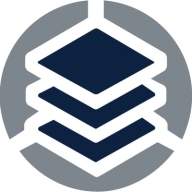

Datadog and StackState compete in the observability and monitoring space. Datadog often has the upper hand with competitive pricing and robust service support, while StackState appeals through its advanced capabilities.
Features: Datadog specializes in infrastructure monitoring, offers APM solutions, and comprehensive logging capabilities, providing real-time analytics. StackState offers topology mapping and dependency visualization, focusing on root cause analysis and delivering contextual insights. Its specialization in topological analysis gives StackState an advantage in intricate environments.
Ease of Deployment and Customer Service: Datadog provides streamlined deployment across cloud environments, backed by extensive documentation and support channels, making setup approachable. StackState involves a more complex deployment process but balances this with personalized customer support, benefiting intricate integrations.
Pricing and ROI: Datadog attracts with flexible pricing models suited for scalable solutions within budget limits. StackState, requiring higher initial investment, aims to provide substantial returns via tailored functionality, reducing downtime and increasing reliability. Datadog offers a cost-effective entry, whereas StackState's investment can yield greater returns in settings demanding advanced insights.
| Product | Market Share (%) |
|---|---|
| Datadog | 5.0% |
| StackState | 0.1% |
| Other | 94.9% |

| Company Size | Count |
|---|---|
| Small Business | 78 |
| Midsize Enterprise | 42 |
| Large Enterprise | 82 |
Datadog integrates extensive monitoring solutions with features like customizable dashboards and real-time alerting, supporting efficient system management. Its seamless integration capabilities with tools like AWS and Slack make it a critical part of cloud infrastructure monitoring.
Datadog offers centralized logging and monitoring, making troubleshooting fast and efficient. It facilitates performance tracking in cloud environments such as AWS and Azure, utilizing tools like EC2 and APM for service management. Custom metrics and alerts improve the ability to respond to issues swiftly, while real-time tools enhance system responsiveness. However, users express the need for improved query performance, a more intuitive UI, and increased integration capabilities. Concerns about the pricing model's complexity have led to calls for greater transparency and control, and additional advanced customization options are sought. Datadog's implementation requires attention to these aspects, with enhanced documentation and onboarding recommended to reduce the learning curve.
What are Datadog's Key Features?In industries like finance and technology, Datadog is implemented for its monitoring capabilities across cloud architectures. Its ability to aggregate logs and provide a unified view enhances reliability in environments demanding high performance. By leveraging real-time insights and integration with platforms like AWS and Azure, organizations in these sectors efficiently manage their cloud infrastructures, ensuring optimal performance and proactive issue resolution.
The StackState AIOps platform is a unique offering as we combine:
- Topology – view all components and all their dependencies, on prem and cloud;
- Telemetry – see all metrics, events and logs per component, regardless of its source;
- Tracing – insights into end-to-end customer journey at code level;
- Time travelling – travel back to any moment in time.
We make this possible through our unique version graph database (the so called 4T model).
Again, all combined in one model, one view. Future ready as new technologies will be launched and will be included into StackState’s AIOps platform.
On top of this platform we offer state of the art AI capabilities for:
- Root Cause Analysis;
- Impact Analysis;
- Predictive Analytics;
- Anomaly detection;
- Remediation and Automation
This helps our customer to drastically reduce Root Cause Analysis (RCA) and Mean Time To Repair (MTTR). All together this makes StackState the only vendor today which makes AIOps a reality.
We monitor all IT Infrastructure Monitoring reviews to prevent fraudulent reviews and keep review quality high. We do not post reviews by company employees or direct competitors. We validate each review for authenticity via cross-reference with LinkedIn, and personal follow-up with the reviewer when necessary.